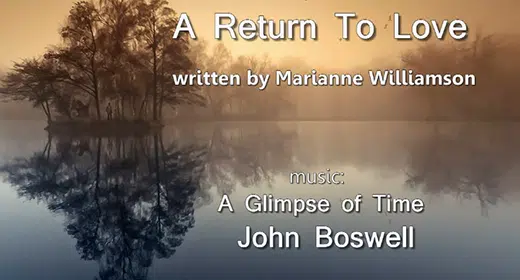by Jeremy Anderberg: In spite of the countless note-taking and to-do list apps and software I’ve experimented with over the years, I always come back to writing things down on paper…
Though I still use the apps for checklists and for master lists of things, my day-to-day note-taking and prioritizing happens on pen and paper (or dry erase marker and whiteboard).
While there have been plenty of studies in recent decades that aim to explain the durable allure of “manual” writing, if you look at the research closer, a lot of the benefits attributed to it aren’t exclusive to that kind of writing, nor have they always been replicated in subsequent studies.
But I don’t need scientific verification to affirm what I have discovered intuitively though my own firsthand, n=1 experiments. Below I outline a bunch of benefits to writing things down by hand that I’ve observed through simple field-testing; try taking up a pen (or pencil) more often yourself, and you may find similar advantages, or others entirely your own.
Boosts your memory through encoding.
If there is one scientifically-proven and replicable benefit of manual writing, it’s this: when you write something by hand you can improve your memory, and therefore your ability to recall information, through the process of encoding.
There are a number of factors at play here, but the gist is that writing manually uses far more brain processing systems than typing. You’re physically coordinating your brain and hand in a deeper way; you’re forced to organize information more concisely (more on that below); you have to actually think a little harder to write something with your hand versus on a keyboard or screen. All of this leads to the information coming out of your writing utensil being encoded on a deeper level into your memory. When you type, it’s almost like the information is simply using your body as a conduit for being transferred onto a screen; when you write, the information is actually being stored and processed for later use and recall.
Forces you to think and filter.
When you write something down by hand, you’re taking advantage of the benefits of constraints. By limiting yourself both in physical space (you can only get so much on a page) and physical ability (you can only write so quickly), you’re forcing yourself to decide what’s most important. If you’re taking notes or writing out to-dos on a screen, there’s literally endless space to do so; it’s actually pretty easy to mindlessly type out highlights from a lecture or make a list of every single thing that you’re thinking about in the moment. You’ll type out a forest and have no sense of the trees.
No matter your canvas when writing by hand, you’ve got boundaries. You have to pay more attention, think it all through a little more carefully, decide which items to cut and which to keep. Think of the page as being a built-in filter for the stuff floating around in your consciousness.
Creates a visual reminder that keeps things top of mind.
While list-making and note-taking apps are handy, once the screen is turned off or put into your pocket, those ideas go away. Out of sight, out of mind — truly. For example, while I still use Todoist every day, it inevitably gets lost among the dozen tabs I have open on my computer, and I sure don’t think of it when I’m on my phone because I’m using a handful of other apps all the time. There’s too much digital clutter for it to be top of mind when it seems like I really need it, which is when I’m distracted — it’s kind of a catch-22.
In contrast, I can keep something that I’ve written down — whether it’s a list of tasks or an inspiring phrase — constantly in front of my eyes. I don’t have to remember to remember it.
I recently bought a FluidStance desktop whiteboard and have really benefited from it. When I write down a research plan for an article or my top few priorities for the day — Rule of 3 for the win! — I don’t have to spend mental energy on remembering those things. I know that they’re recorded and will continually be in my peripheral vision for the entire work day. When I get distracted, all I have to do to snap myself back on track is simply glance down and see my written reminders of what needs to be done.
Minimizes distraction.
Things that are written down by hand are not only readily accessible in the midst of distraction, but won’t put you in touch with other distractions.
Swipe into your phone to take a note in your note-taking app . . . and you’ll find your finger wandering over to the Instagram app. And the Twitter app. Soon enough, even though you finished typing your note ten minutes ago, you’re still twiddling with your phone.
Fight it with time limits and app blockers all you want, but the digital distraction dragon cannot be slayed once and for all. I’ve come to accept it. Moving to pen and paper for my daily note-taking and list-making — again, the checklists and master lists of things still reside in Todoist — has ensured that I stay more focused throughout the day and get my most valuable tasks taken care of. Writing things down with pen and paper minimizes the need to toggle from screen to screen, app to app, and tab to tab, which presents me with fewer opportunities to get sucked into the internet’s “infinity pools.” I still get distracted, sure, but it takes far less time to get back on track when I’m not relying on my screen to guide my to-dos or my article writing.
Allows for more creative organizing and mental processing.
One of the things I appreciate most about writing things on paper (or whiteboard) is the ability to organize things in a way that goes beyond the line-by-line format offered by most note-taking and to-do list apps. I can draw boxes around important items, I can make arrows between connected ideas, I can set lists in columns and even draw pictures if needed. Some apps allow for that sort of freeform writing, but they’re invariably clunky.
The mind does not often operate on a clear-cut, step-by-step path. Allow your writing to follow its back and forth, loop-de-loop processes by writing things out manually.
There’s a unique kinetic energy to it.
Though certainly not a measurable benefit, there’s a unique, unexplainable power to the idea that words are flowing from your brain, through your arm and hand, and out onto a page. It’s a very physical process that just isn’t the same when it’s words flowing through a keyboard and into the digital ether. The slowness of writing forces deeper contemplation; the way your hand muscles get just a little bit tired (surely because we simply don’t use those muscles much anymore!) is physical evidence that you’re doing work; the visual and tangible proof of ideas come to life is far more inspiring than seeing it on a Word Doc.
There’s a reason that some of our greatest modern writers — J.K. Rowling, Neil Gaiman, Stephen King, Joyce Carol Oates, the list goes on — still prefer longhand to a digital manuscript (for first drafts, at least). It’s ineffably simple: There’s more magic, and power, to be found on the page than on the screen.





















































